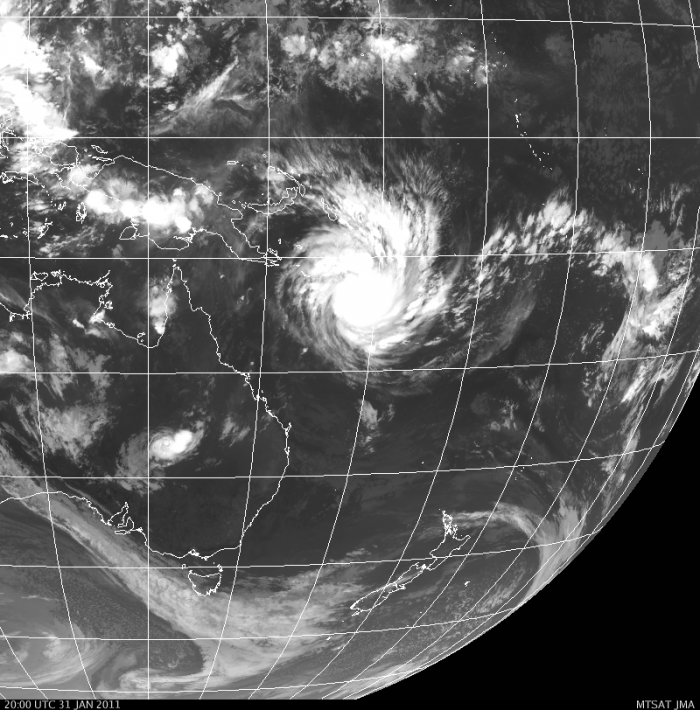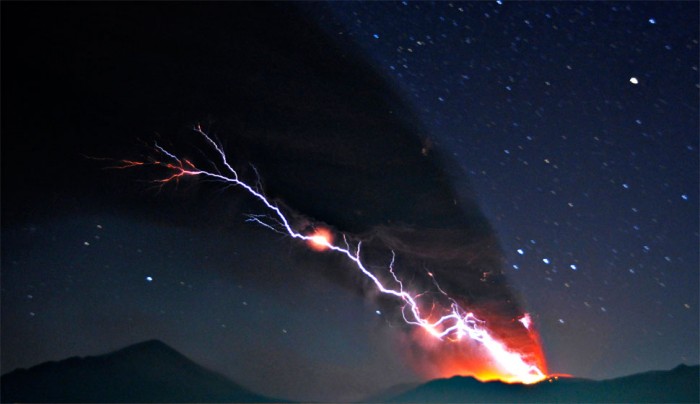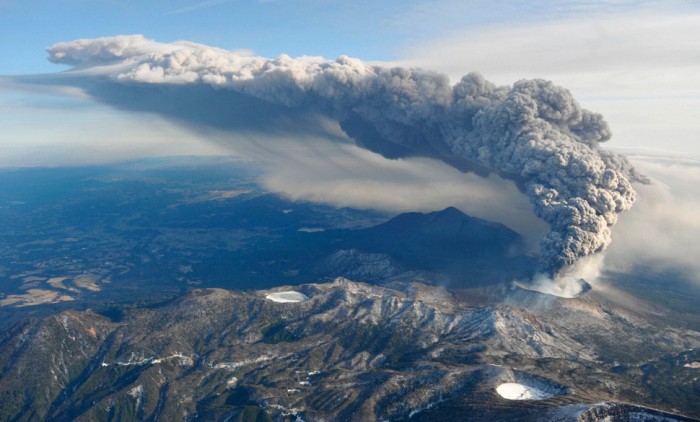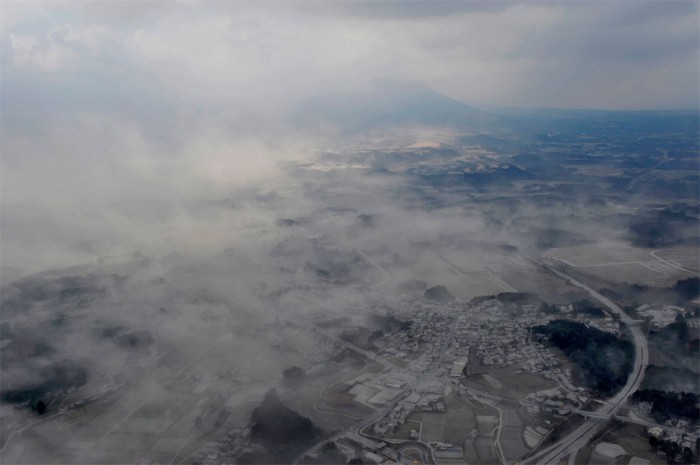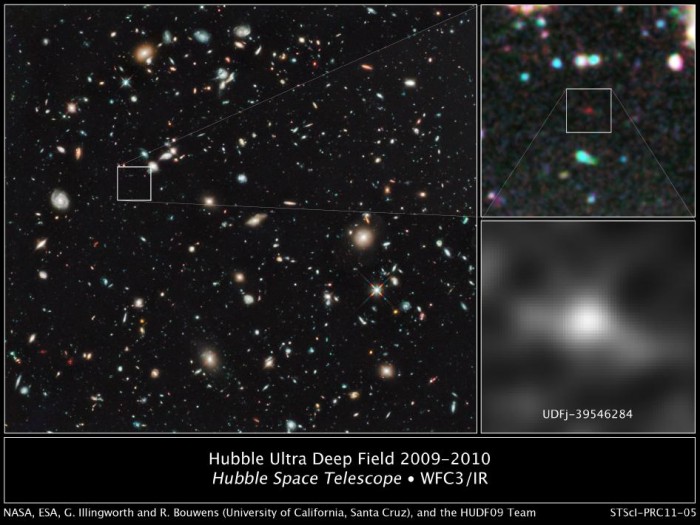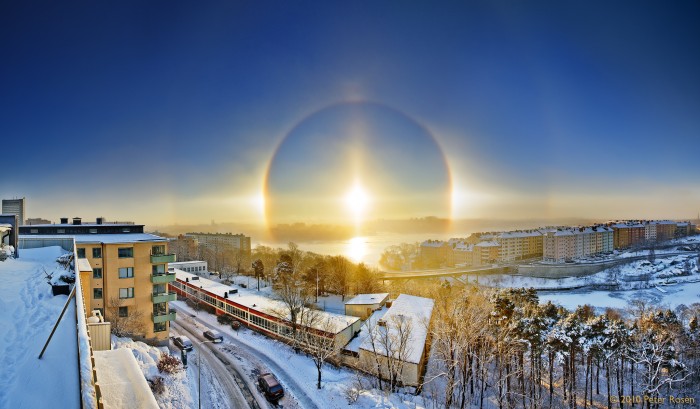Just When You Thought Australia Couldn't Have It Worse
This fellow, Cyclone 11P (Yasi), comes around:
Here’s how large it is in comparison (courtesy The Courier-Mail):
Let’s hope it takes a turn…
Pictures of Shinmoedake
The earth is restless again! This time, however, it’s not Eyjafjallajökull in Iceland. Here are some pictures of Shinmoedake (新燃岳) in Japan which has been erupting since January 11th:
Update: Video footage of the eruption:Source: Reuters
Hubble Finds Most Distant Galaxy Ever Seen
From NASA.gov:
Astronomers have pushed NASA’s Hubble Space Telescope to its limits by finding what is likely to be the most distant object ever seen in the universe. The object’s light traveled 13.2 billion years to reach Hubble, roughly 150 million years longer than the previous record holder. The age of the universe is approximately 13.7 billion years.
The tiny, dim object is a compact galaxy of blue stars that existed 480 million years after the big bang. More than 100 such mini-galaxies would be needed to make up our Milky Way. The new research offers surprising evidence that the rate of star birth in the early universe grew dramatically, increasing by about a factor of 10 from 480 million years to 650 million years after the big bang.
NASA Methane Rocket Test Fire
Go on… There’s nothing to see here — just a test fire of NASA’s new methane rocket:
via reddit
A Sun Halo Beyond Stockholm
Ah, something from my side of the world! This is quite a sundog! And perhaps this shot is even more impressive considering that, at this time of year, actually getting a glimpse of the Sun, much less a picture, is a feat in itself.
From NASA APOD:
What’s happened to the Sun? Sometimes it looks like the Sun is being viewed through a large lens. In the above case, however, there are actually millions of lenses: ice crystals. As water freezes in the upper atmosphere, small, flat, six-sided, ice crystals might be formed. As these crystals flutter to the ground, much time is spent with their faces flat, parallel to the ground. An observer may pass through the same plane as many of the falling ice crystals near sunrise or sunset. During this alignment, each crystal can act like a miniature lens, refracting sunlight into our view and creating phenomena like parhelia, the technical term for sundogs. The above image was taken last year in Stockholm, Sweden. Visible in the image center is the Sun, while two bright sundogs glow prominently from both the left and the right. Also visible is the bright 22 degree halo — as well as the rarer and much fainter 46 degree halo — also created by sunlight reflecting off of atmospheric ice crystals.
Credit: Peter Rosén
